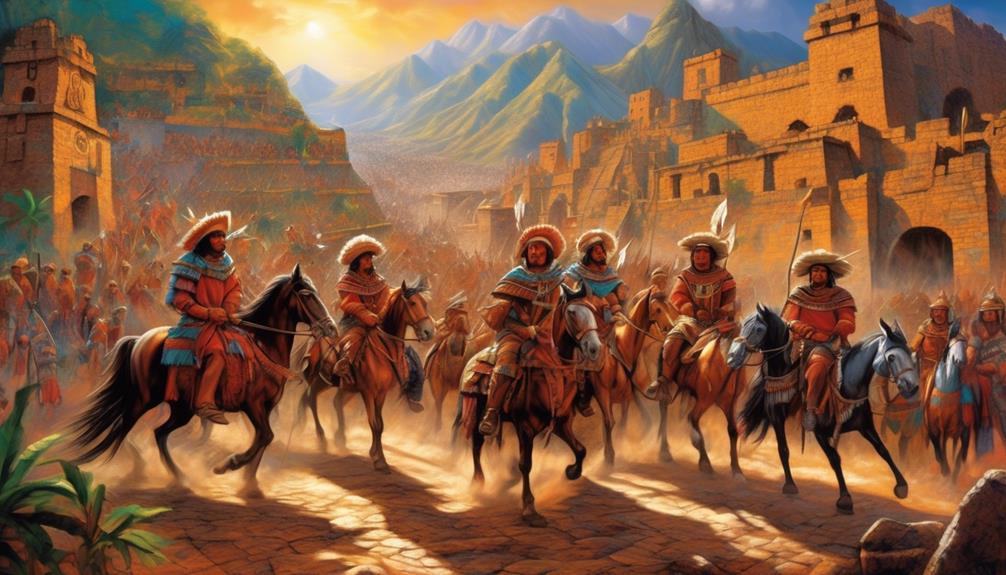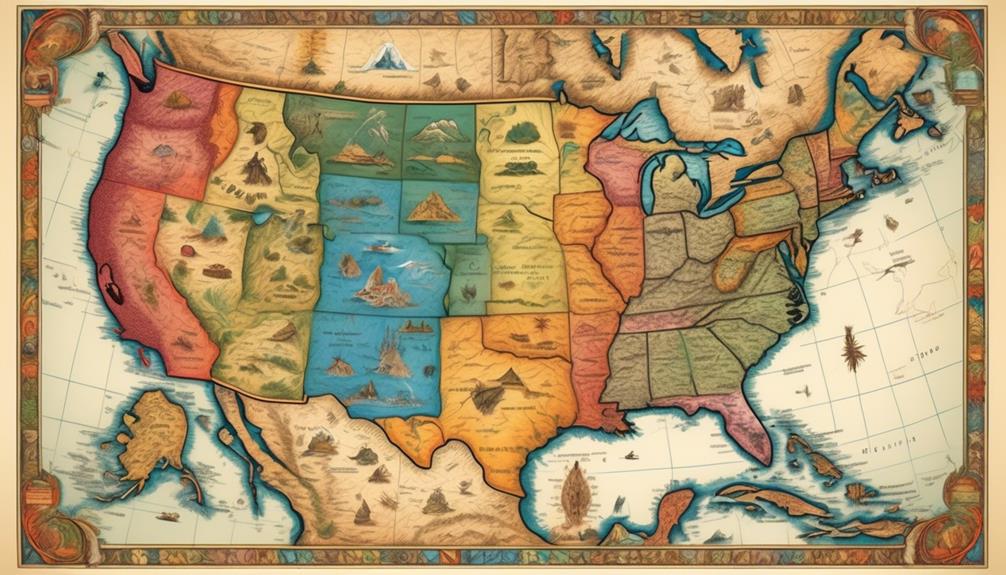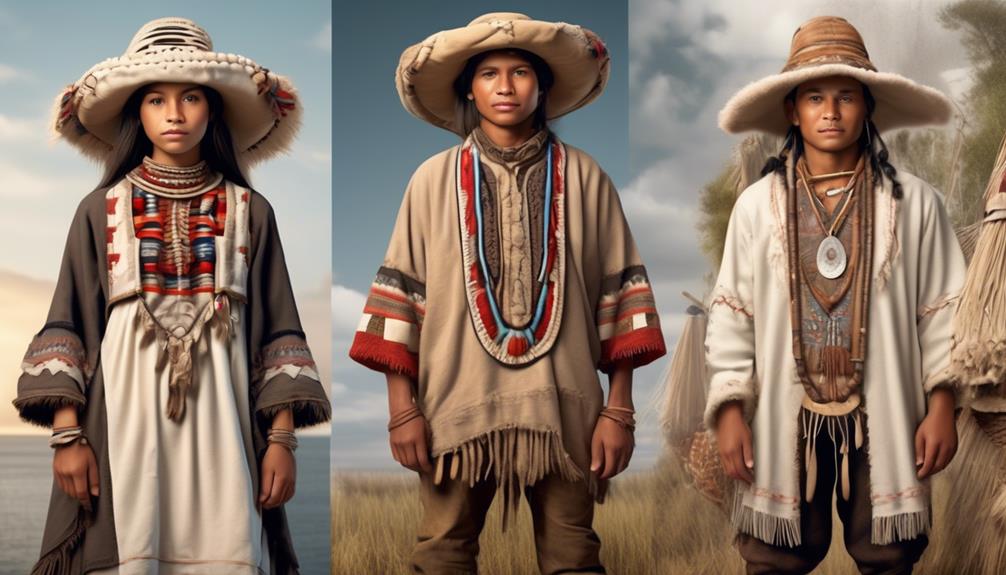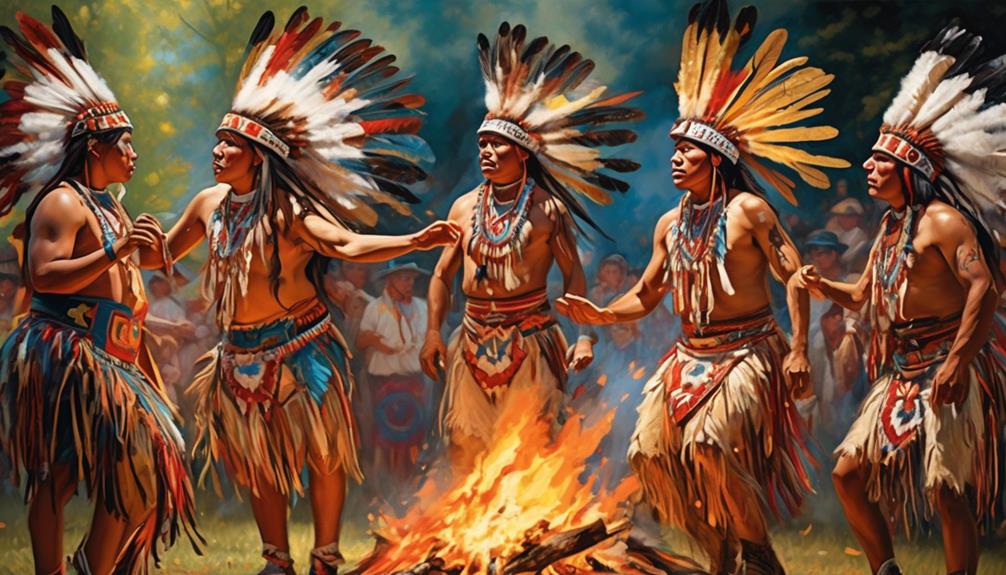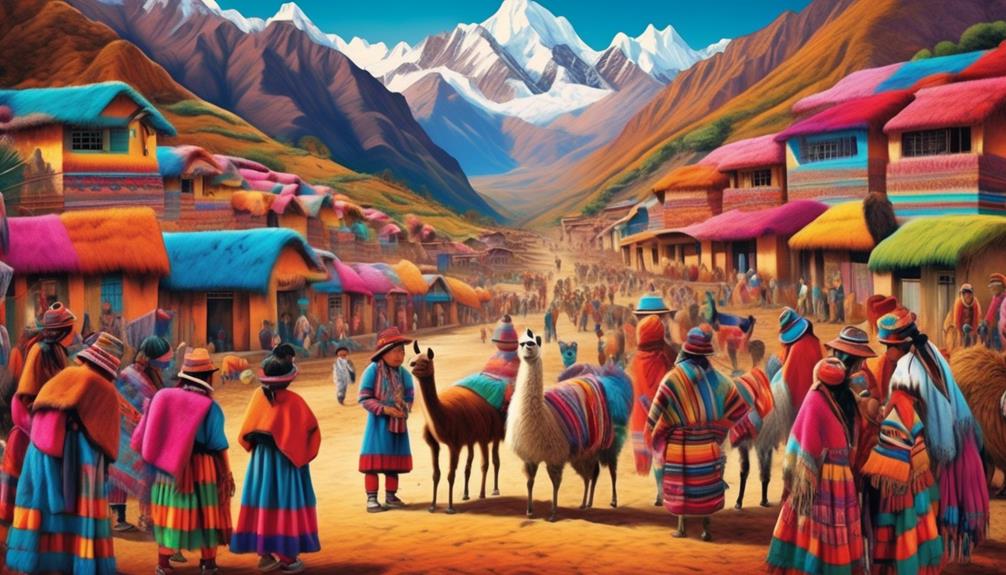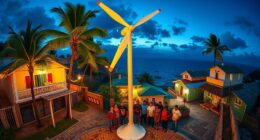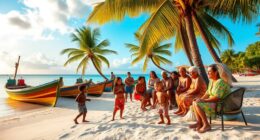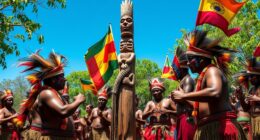When the conquistadors arrived in the Americas, they were a relentless and transformative force, reshaping the structure of indigenous societies in a way that still echoes through history. The impact of their arrival can still be seen today, as we grapple with the complex and often heartbreaking legacy they left behind.
But how exactly did the conquistadors affect the indigenous peoples of the Americas? By exploring the military conquest and resistance, cultural assimilation and religious conversion, economic exploitation and labor practices, demographic collapse and population decline, as well as the long-term sociopolitical impacts, we can begin to understand the far-reaching consequences of their presence.
Key Takeaways
- Conquistadors employed advanced military tactics and technology, while indigenous groups used guerrilla warfare and strategic use of terrain.
- Indigenous alliances played a crucial role in shaping outcomes of military encounters between conquistadors and indigenous groups.
- Conquistadors imposed their culture and religion on indigenous populations, resulting in the transformation and suppression of indigenous cultural practices and beliefs.
- The economic exploitation of the Americas by conquistadors led to forced labor practices, disruption of traditional indigenous economies, and a decline in indigenous populations.
Military Conquest and Resistance
The military conquest of the indigenous civilizations of the Americas by the conquistadors was marked by fierce resistance and significant upheaval. The conquistadors, with their advanced military tactics and technology, encountered indigenous groups with diverse military strategies.
While the conquistadors had superior weaponry such as guns, cannons, and steel armor, the indigenous peoples employed various tactics, including guerilla warfare, ambushes, and strategic use of terrain to resist the conquest.
Additionally, indigenous alliances played a crucial role in shaping the outcomes of these conflicts. Some indigenous groups formed alliances with the conquistadors, either out of fear or to gain advantages over their traditional enemies, while others united in large-scale coalitions to resist the invaders.
The military encounters between the conquistadors and the indigenous civilizations weren't simply one-sided victories, but rather complex engagements that involved a mix of military tactics and indigenous alliances.
Understanding these dynamics is essential in comprehending the multifaceted nature of the conquest and its enduring impacts on the indigenous societies of the Americas.
Cultural Assimilation and Religious Conversion
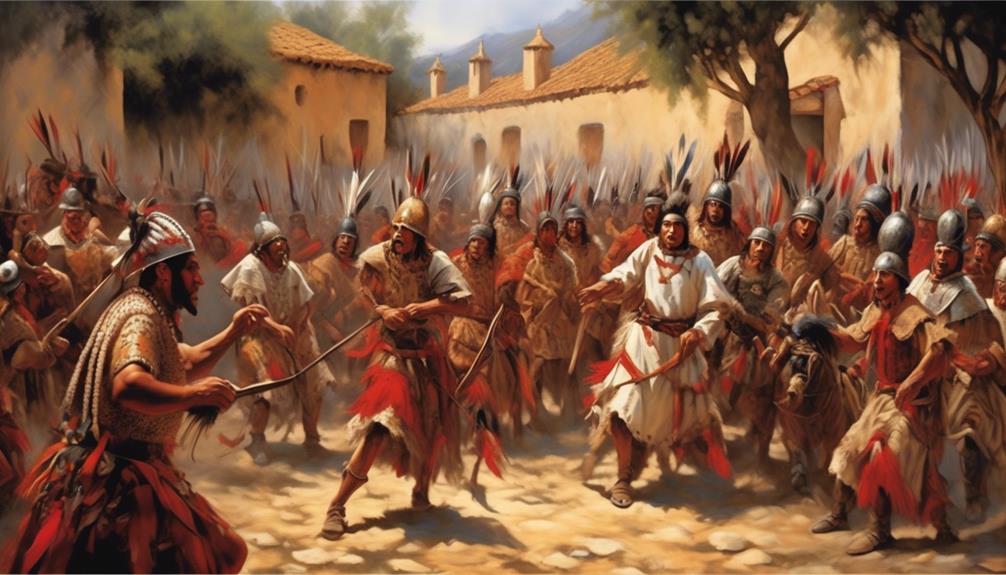
Cultural assimilation and religious conversion were inevitable consequences of the complex engagements between the conquistadors and indigenous civilizations, shaping the enduring impacts on the indigenous societies of the Americas. The conquistadors sought to impose their culture and religion upon the indigenous populations, often utilizing coercive tactics to enforce compliance. This resulted in a profound transformation of indigenous cultural practices and belief systems.
The imposition of Christianity led to the suppression of indigenous religions, rituals, and traditions, causing significant cultural upheaval. The indigenous resistance to these changes was often met with severe consequences, including violence and suppression.
However, it's crucial to note that despite the efforts of the conquistadors, elements of indigenous culture persisted. Many indigenous communities engaged in covert cultural preservation, maintaining their traditions and beliefs in secret. This resilience demonstrates the strength of indigenous resistance to cultural assimilation and religious conversion.
Over time, these acts of resistance contributed to the preservation and revitalization of indigenous cultural practices and belief systems, allowing them to endure despite the challenges posed by the conquistadors.
Economic Exploitation and Labor Practices
Economic exploitation and labor practices significantly impacted the indigenous societies of the Americas during the era of conquistadors' colonization. The conquistadors sought to extract as much wealth as possible from the newly discovered lands, leading to the forced labor of indigenous populations in mines, plantations, and other resource extraction activities. This exploitation had devastating effects on the indigenous communities, as their labor was exploited to extract valuable resources such as gold, silver, and agricultural products.
The encomienda system, for example, forced indigenous people to work in Spanish mines and fields, resulting in widespread abuse and mortality.
The conquistadors' economic exploitation disrupted traditional indigenous economies, leading to the depletion of natural resources and the breakdown of established trade networks. The forced labor practices also contributed to a significant decline in indigenous populations due to the harsh working conditions, exposure to new diseases, and overall mistreatment.
The conquistadors' relentless pursuit of wealth through forced labor and resource extraction had long-lasting detrimental impacts on the economic and social structures of the indigenous civilizations of the Americas.
Demographic Collapse and Population Decline
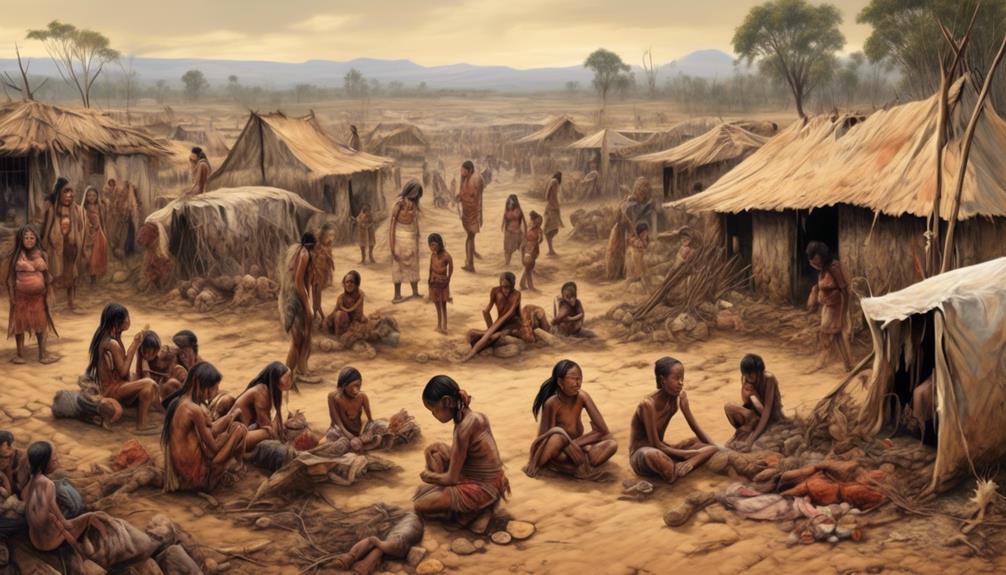
Having examined the economic exploitation and labor practices that significantly impacted indigenous societies during the era of conquistadors' colonization, it's crucial to understand the subsequent demographic collapse and population decline experienced by these communities.
The arrival of the conquistadors led to a catastrophic disease impact on the indigenous populations. Diseases such as smallpox, measles, and influenza, for which the Native Americans had no immunity, spread rapidly, causing devastating losses.
The population displacement further exacerbated the demographic collapse. Communities were uprooted from their ancestral lands, leading to social disintegration and loss of traditional knowledge and practices.
Additionally, the forced labor practices and harsh treatment by the conquistadors contributed to the decline in population.
The combination of disease impact and population displacement resulted in a demographic collapse of catastrophic proportions, leading to the decimation of indigenous populations across the Americas.
Understanding the demographic collapse and population decline is crucial in recognizing the long-lasting and devastating effects of the conquistadors' arrival on the indigenous civilizations of the Americas.
Long-Term Sociopolitical Impacts
The long-term sociopolitical impacts of the conquistadors' arrival in the Americas continue to shape indigenous societies to this day, influencing governance structures, power dynamics, and cultural resilience. These impacts have had profound and lasting effects on the indigenous civilizations of the Americas, shaping their political power, social hierarchy, cultural identity, and traditional practices.
- Political Power Shifts: The conquest led to a significant shift in political power within indigenous societies. Traditional ruling structures were often dismantled or co-opted by the conquistadors, leading to the establishment of new systems of governance that marginalized indigenous leaders and institutions.
- Social Hierarchy Transformation: The arrival of the conquistadors disrupted existing social hierarchies, leading to the marginalization of indigenous populations and the elevation of the Spanish conquerors and their descendants. This restructuring of social hierarchies has had enduring effects on indigenous communities, impacting their access to resources and opportunities.
- Cultural Identity and Traditional Practices: The imposition of Spanish colonial rule and the spread of European cultural values resulted in the erosion of indigenous cultural identity and traditional practices. The enduring legacy of this cultural disruption continues to impact indigenous communities as they navigate the preservation and revitalization of their cultural heritage in the face of historical trauma.
Frequently Asked Questions
What Were the Specific Tactics and Strategies Used by the Conquistadors During Military Conquest?
When discussing military tactics and conquest strategies, it's crucial to analyze the specific methods employed by the conquistadors.
Their approach included the use of advanced weaponry, such as firearms and cavalry, which gave them a significant advantage in battle.
Additionally, they utilized psychological warfare and exploited existing divisions among indigenous groups to weaken resistance.
These tactics, combined with their strategic alliances and military expertise, were instrumental in their success in conquering indigenous civilizations in the Americas.
How Did the Indigenous Civilizations of the Americas Resist the Efforts of the Conquistadors?
We've found that indigenous civilizations in the Americas utilized various strategies to resist the efforts of the conquistadors. They employed guerrilla warfare, utilizing their knowledge of the terrain to their advantage.
Additionally, some groups formed alliances with other indigenous peoples or sought refuge in remote areas, making it difficult for the conquistadors to maintain control.
This resistance, combined with the conquistadors' tactics of intimidation and military force, shaped the dynamics of the encounters.
What Were the Long-Term Effects of Cultural Assimilation and Religious Conversion on the Indigenous Populations?
Cultural adaptation and religious syncretism had profound long-term effects on indigenous populations. The assimilation of indigenous traditions into the conquerors' culture and the blending of religious beliefs resulted in a complex cultural landscape.
This process impacted social structures and belief systems, leading to lasting changes in indigenous societies. As a result, the indigenous populations experienced a transformation that shaped their identity and interactions with the conquistadors and subsequent colonial powers.
How Did the Economic Exploitation and Labor Practices of the Conquistadors Impact the Indigenous Civilizations?
Labor exploitation and economic impact were profound.
The conquistadors disrupted social structures, altering power dynamics.
Indigenous civilizations faced forced labor, resource extraction, and tribute demands, leading to immense hardship.
The economic exploitation devastated local economies and led to the decline of traditional industries.
This reshaped the social fabric and cultural practices, perpetuating long-lasting effects on indigenous societies.
What Were the Specific Factors That Contributed to the Demographic Collapse and Population Decline of the Indigenous Peoples?
Factors contributing to the demographic collapse and population decline of indigenous peoples encompass disease, warfare, and forced labor.
Indigenous resistance, while significant, was often overshadowed by the overwhelming economic impact and exploitative labor practices of the conquistadors.
The long-term effects of these factors resulted in devastating consequences for indigenous populations, shaping the trajectory of their civilizations.
Conclusion
In conclusion, the impact of the conquistadors on indigenous civilizations of the Americas was a complex and multifaceted one.
While the military conquest and resistance shaped the immediate outcome, the long-term effects of cultural assimilation, economic exploitation, and demographic collapse can't be overlooked.
The sociopolitical impacts continue to reverberate through the Americas to this day, highlighting the lasting legacy of the conquistadors and the enduring resilience of indigenous peoples.
Mary is a passionate writer who brings creativity and a fresh perspective to our team. Her words have the power to captivate and inspire, making her an essential contributor to our content. Mary’s commitment to storytelling and dedication to promoting Indigenous culture ensures that her work touches the hearts of our readers. We’re fortunate to have her as part of our team.
